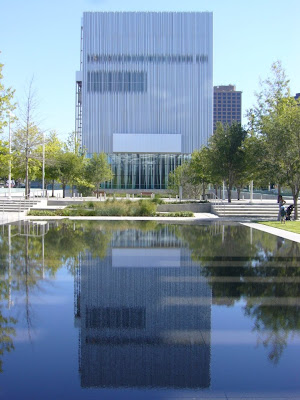
Programmatic Flexibility- This category looks at larger systems that actually move parts of the building to conform to different programmatic responsibilities. Most of these technologies are found in current stadia. While I have done some in depth studies of different stadia, the following board shows the main programmatic responsibilities. It should be able to change into four main programs, from soccer stadium to concert venue to public park to various smaller stadium complexes with relative easy. Should it be read as a soccer stadium when, say, it is in concert set-up? Absolutely, but the transformative qualities of the space portrays a certain mystery to the people passing by. This is a very complex idea and allows one to view the building's life cycle in many different ways.

Site Adaptation- These are all technologies that allow the building to change instantaneously to different site conditions. Climate, time of day, time of year, event type, density, and shading all fall into this category. More specifically, I am looking at smart systems that don't rely on a users input every time a change is made. These systems allow the building to be viewed as it's own entity, almost giving it a certain artificial intelligence. I looked at smart shading systems such as Jean Nouvel's Arab Institute, as well as older technologies, like the track system of the Villa Girasole, which can rotate to the sun's exact location. I see these ideas being used more in the roofing system then any other.

Human Interaction- These are technologies that require a human being to interact with it, creating spaces that are abundance with life. Read at the human scale, these technologies use direct parameters from human beings to generate changes. I looked at Pulse Park, which runs a light show off of different user's heart rates, as well as the Bloom Wall, which has mechanical flowers that open or close due to human movement.

I hope that the simplification of technologies will allow me to designate which category fits into each space. These technologies will start to all integrate into each other, creating a transformative space.





















